
AUDIO-TECHNICA AT4081 & AT4080
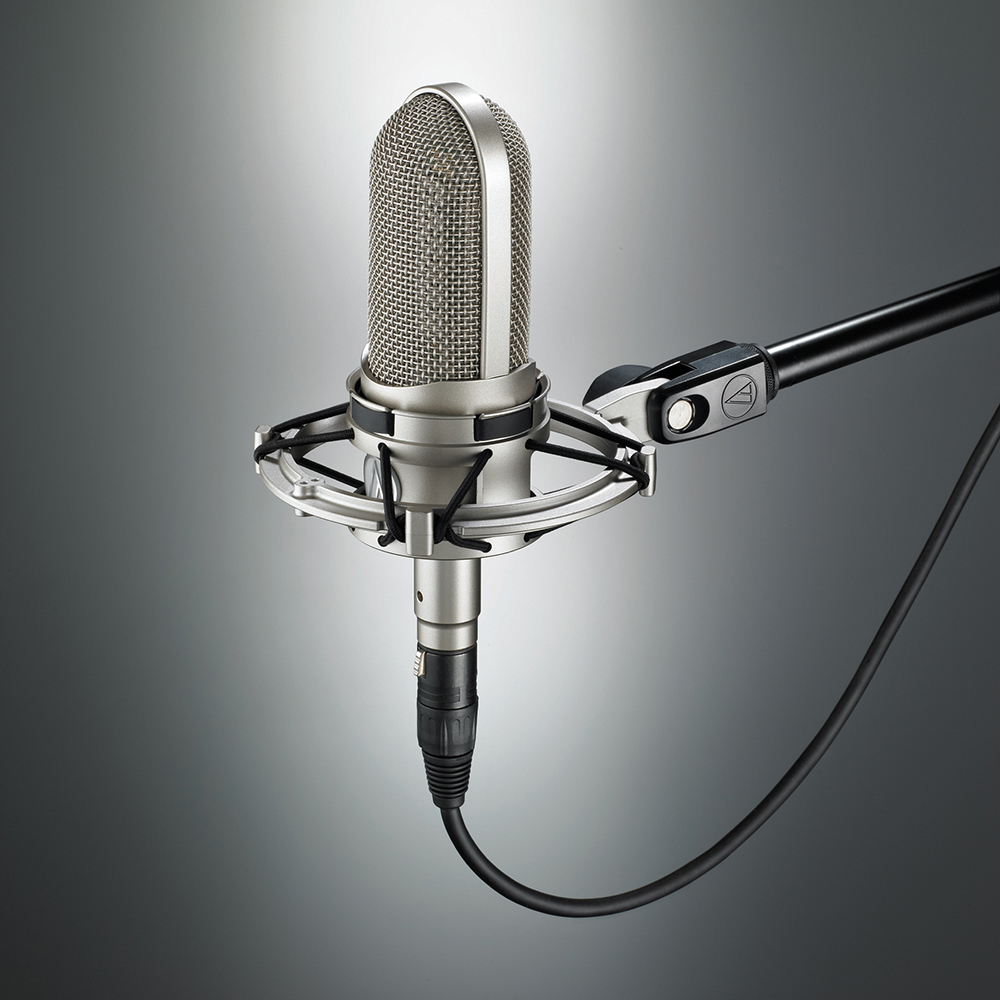
Tie all the elements from the latest ribbon microphones together and they’d probably stretch around Flemington racecourse. Who’s going to put their money on Audio-Technica’s new entries with this many nags in the field?
Text: Greg Walker (AT4081) & Chris Ferguson (AT4080)
Ribbon microphone design has come on in leaps and bounds in recent years. You only have to browse the last couple of issues of AudioTechnology to see phantom power, biased polar lobes, high SPL handling, even secret space-age alloys thrown into the mix of some of the most recent designs. The latest manufacturer to add its voice to this creamy chorus is industry heavyweight Audio-Technica, and perhaps more so than any other company, its new AT4081 ribbon [yet another indistinguishable name from the king of indistinguishable names] genuinely offers a new take on an old formula. So much so, that when I initially used the 4081, it didn’t sound like a ribbon at all. But before I explain my reasons for this first impression, let’s take a quick gander at the mic itself.
LOOK, NO EARS
Physically, the AT4081 is a fairly unassuming ribbon microphone. At 155mm long and 21mm in diameter, it’s a smallish bipolar ‘stick’ style side-address design – kind of like a Royer 121 on a diet and without the Prince Charles ears.
It’s a well-built and hefty little number, finished in brushed
silver and sporting an ultra-fine mesh that affords you a bird’s eye view of the inner workings of the transducer. It’s a pretty cool looking mic actually; a design that’s grown on me over time… despite earlier concerns that the mesh looked too weak to protect the fragile contents within. The AT4081 package ships with a generic yet sturdy black vinyl case, a wind shield and what the manual describes as an ‘isolation clamp’ – which looks a lot like a plastic mic clip to me (but, in use, seems to limit stand vibrations fairly well).
Inside the microphone things get far more interesting. The AT4081 utilises a proprietary ‘MicroLinear’ ribbon imprint that’s designed to limit lateral flexing and distortion, while at the same time improve durability. Aside from Audio-Technica’s boast that there are 18 patents pending on this particular design, the specs make for pleasant reading: 150dB SPL handling (@1kHz with 1% T.H.D.), a 30Hz to 18kHz frequency response and a signal-to-noise ratio of 69dB. The frequency response chart shows a gentle lift in the 150Hz region and several more abrupt peaks at around 6 and 9kHz, but
arguably the most important performance spec is its upper roll-off crossover point: well above 10kHz – abnormally high
for a ribbon.
Still unusual – though less so these days – is the fact that the mic requires phantom power to feed the active electronics (not the dynamic transducer element), which, in tandem with neodymium magnets, allows the mic to deliver relatively high output levels. It should also be noted that, while the AT4081 is a very modern take on ribbon design, it still needs to be handled gently like an old timer: never blown into or thrown into the bottom of a gig bag.
BRIGHT AS DAY
So what does the 4081 sound like? Well, if I had to choose a single word to describe the mic, it would have to be ‘bright’ – at least by comparison with every other ribbon I’ve used. My first adventure with the 4081 was as a room mic, recording double bass in a great sounding largish space, and when I listened back to the results I was very surprised indeed. Here I was expecting a dark and reverberant ambience. Instead, what I heard back was a whole bunch of thin sounding early reflections and a fair bit of noise to boot. This somewhat alarming result changed quickly for the better, however, once I switched my trusty UA 6176 mic preamp from its 2kΩ impedance setting to a much lower 500Ω setting. This had several effects, some of which are actually generated by the preamp itself: a higher output gain, an altered tonal balance and a much reduced noise floor.
Things still sounded pretty bright up top for a ribbon mic though, and I was soon forced to alter my placement, bringing the mic to within about two metres of the instrument, where it captured a good middle-distance perspective that complemented the close Sennheiser 441 well.
This pattern was repeated on subsequent sessions on a variety of bowed and reed instruments. Initially I went for distant room ambience, only to find the results less than satisfactory, eventually finding a much more useable position closer in. Unlike ribbons such as my Octava ML53, for example, which is dark enough to give Lord Vader the shivers, the AT4081 didn’t seem to throw much of a shadow at all. Indeed, its performance was far more reminiscent of a condenser microphone than a ribbon. It wasn’t that the mic was particularly zingy or harsh up top (indeed, the top end was quite smooth). It just didn’t conform to my expectations of a rolled-off old-time tone, and therefore didn’t perform the tasks I usually ask my ribbons to perform. I’ve got to say, at this point, I was fairly disappointed with the AT4081, and was contemplating seriously slamming it in the review. But then a little more time passed and I changed my tune.
Back in the more modest surrounds of my home setup, I found myself using the AT4081 close up for some violin and viola overdubs and, lo and behold, I actually liked what it did for the stacked timbres of these instruments – the bottom-end seemed ample, and the tops were clear without being harsh or overly ‘rosiny’. Ditto with some acoustic and classical guitars, and various hand percussion instruments. Suddenly I found myself using the 4081 on everything – even recording certain tracks again from scratch to benefit from the mic’s unique sonic perspective. Guitar amps sounded even and true, and drum room sounds were surprisingly useable – though I was often adding a dash of bottom-end and backing off some tops with analogue EQ to get things where I wanted them.
Finally, a couple of quick vocals got me thinking this mic was actually pretty damn good… before I went back into a big room and tracked some more string and brass instruments.
Here I still found the 4081 best suited to mid-distance and close-up work. While recording a four-piece Russian folk band – I kid you not – I took a punt and put the Audio-Technica up close to the front of the piano accordion so that it caught the bass and treble registers of the instrument evenly. I baffled off the rear lobe of the figure-eight to reduce spill, and the result was a great tone that sat beautifully in the mix and felt very warm and alive. As I’d hoped, the ribbon element miraculously dodged all the mechanical button noises that can drive you mad when miking these instruments with condensers or dynamics. As a parting shot I used the ribbon as a room source on a recording of five blokes bashing drums, and here it gave a very true representation of the chaos in the larger space.
180º FLIP
So at the end of my time with the AT4081 I’ve turned 180 degrees and am happy to say I now really like it. A traditional ribbon microphone it ain’t, but that’s possibly its greatest asset. With so many companies bringing out affordable (and not so affordable) variations on the ‘warm’, ‘rolled-off’ tone of the golden years with a subtle nod to modern demands, Audio-Technica has instead given us a brand new mic that does brand new things. If you like, it’s a condenser without the hype or a conventional ribbon with all the tops restored. While it doesn’t give you the thick beefy bottom-end that many ‘vintage’ brands offer, it excels as an all-round studio tool, particularly for close miking and out to about three metres from the source. On percussion, strings, guitars and vocals, it does a great job of simultaneously delivering body and clarity – no other ribbon I know does that without the aid of decent analogue EQ.
The AT4081 has a unique character. In many respects it’s a genuinely new option for those seeking something in between condenser zing and ribbony roll-off. To get the most out of this mic you really need a relatively low-impedance (sub 1000Ω) mic preamp, but if you’ve got one in your kit and want a ribbon mic that isn’t restricted to ‘character’ roles, get on the AT4081 train – it’s definitely an interesting journey worth taking.
A WORD ON THE AT4080
Chris Ferguson: Before I begin I must make a disclosure: I love ribbon mics, and when I say ‘love them’ I really mean it. Not in the ‘I love Mrs Ferguson’ kind of way, mind you, but it’s a love affair nonetheless.
It all started in the mid ’90s when I recorded my first record exclusively with a fantastic collection of ’50s ribbon mics: the Coles 4038 (the horse shoe), the 4101 (the Flemington) and the STC 4033 (potato masher). I completely fell for the warm silky sound of all these mics and consequently used the same lineup to record my next three albums.
Audio-Technica is one of the most respected names in the audio business, so I was genuinely excited by the news that the companyhad released, not one, but two new ribbon mics onto the unsuspecting market.
Like the 4081, the altogether pudgier 4080 has been designed from the ground up to address two major issues: the fragility of the ribbon element, and the punishingly low output that very quickly exposes the limitations of most mic preamps with respect to their noise floor.
First issue: fragility. Like its sister ribbon, the 4080 uses a dual-ribbon design featuring a “proprietary MicroLinear ribbon imprint” – they had to call it something I guess. This process is designed to increase the torsional strength and rigidity of the ribbon element, with the added bonus of significantly reducing distortion figures, which it clearly – no pun intended – does.
The second issue – that of a ribbon motor’s exceedingly low output – is addressed by the incorporation of a Fet-based active stage, which raises the output of the microphone to a more typical condenser mic level. This technique has proved a popular solution amongst designers of late, even showing up in some of the cheaper Chinese models. It’s also had two additional knock-on benefits. Firstly, the design approach has freed up a swag of high-quality, medium-gain preamps to act as the amplifier stage; secondly it’s lowered the output impedance to 100Ω, which has the bonus effect of rendering the mic largely immune to issues of capacitance when using long cables that can significantly alter its frequency response.
SUBTLE STYLING
Physically speaking, the 4080 is a fine specimen. The finish of the mic is excellent – in a typically understated Audio-Technica sense. It also comes complete with a very nice cast metal shock-mount.
But of course it’s how the mic sounds that’s most important, and judging by my current recording interest – which mainly involves tracking quiet acoustic instruments in their ambient surrounds – it’s great.
These instruments – ukulele, hand drums, and soft vocals – are notoriously low in volume, but also require medium distance miking techniques – possibly the worst combination for a ribbon mic. This has provided me a great opportunity to expose the 4080’s noise floor – something that’s notoriously ordinary amongst ribbons, whether they
be old-school or new.
The first thing I did with the 4080 was simply don some high-end headphones, plug the microphone in, crank up the gain, sit back, close my eyes and listen. Immediately I was aware of the birds chirping and my neighbour talking in his backyard, the wind tickling the leaves in
the trees and very little in the way of self noise. A good start I thought.
Then it was on to some instruments…
First up were percussion instruments: hand drums, a red Indian tom tom, shakers, bells and tambourines. These types of instruments typically highlight the benefits of a ribbon’s tonal response: a gently rolled-off top-end drawing the attention away from the tizz and
inviting you into a secret world called the midrange. Paul Klipsch,
the famous speaker designer, got it right when he decreed: “music lives in the midrange.” The Audio-Technica 4080 agrees. Through it, you immediately become aware of the earthiness of skins and the clatter
of a tambourine bouncing off the walls. It doesn’t blow you away; it sucks you in. The sound is very taught and punchy (a product of the ribbon’s lightning quick transient response) and the overall signature is one of – dare I say it – warmth. It just simply sounds right.
Next up was my concert resophonic ukulele, a lovely hand-made Beltona from New Zealand. Resophonic instruments can sometimes prove difficult to record thanks to their nasal honk, which can sound strident and ugly when recorded unsympathetically. Not to worry. The Audio-Technica rewarded me with a balanced picture, revealing the overtone-rich clang of the resonator. Similarly, with a classical guitar, the restrained top-end allowed for the woodiness of the instrument to come through beautifully.
Overall, the natural aural presentation of the Audio-Technica AT4080 makes it a wonderful asset for anyone working primarily with acoustic instruments.




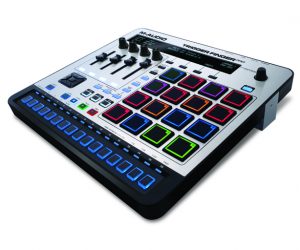
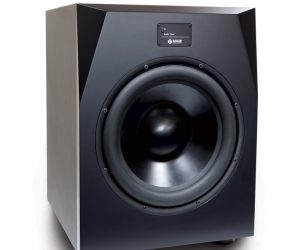

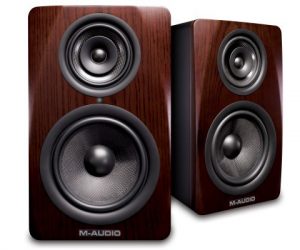


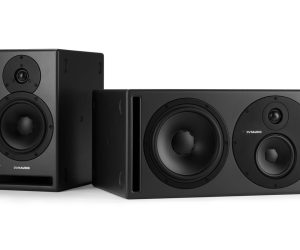





RESPONSES